 I vowed to begin the year with a unit on teaching color theory. It means breaking out the paints when it'd be alot easier sticking to paper and markers but what the heck, I have a sink.
I vowed to begin the year with a unit on teaching color theory. It means breaking out the paints when it'd be alot easier sticking to paper and markers but what the heck, I have a sink.By second grade, most kids know the primary colors and many know the secondary colors. This lesson reinforces the idea that color combinations are infinite and just darn fun to make!
Supplies:
12" x 18" White Paper
Black waterproof marker
Palette of red, yellow and blue (for each child...I know, lots of prep!)
Paint brush and water containers

Step One: Drawing the cute, little fish

I make oval templates for the children. You don't have to of course, but it speeds up the lesson when all anyone wants to get to is the painting! I ask the students to trace 3 big templates and 3 little templates. Add tails, fins, eyes, etc. But no designs...yet!
Step Two: Painting the Primary Colors

Pass out a paper plate or tray with yellow, red and blue tempera paint. One for each student. Ask the children to paint one big fish yellow, one big fish red and another big fish blue. Demonstrate the importance of cleaning their brush.
Step Three: Painting the Secondary Colors

Now for the mixing! Take a tiny scoop of yellow and a tiny scoop of red and mix on the palette. Once they've created their orange, have them paint it on a baby fish. Do the same for blue+yellow=green and red+blue=purple.
It's really common for some things to happen:
1. A child will trace more big fish than small fish.
2. A child will paint more than one fish yellow because the paint feels real good and he just can't help himself.
3. The child can't resist mixing all the colors together.
4. The child gets busy mixing all the colors and makes beautiful designs on his fish (yay!)
For all of these problems, forget it.
Don't correct or point out a problem. The lesson is in the discovery!

Step Four: Adding Value: Painting the Sea

After all the fish have been painted, it's time to bring out a tray of white paint and blue. You can put these in a well-type palette so that the kids can share. Mix blue and white directly onto the paper. Kids LOVE this part...some areas are light, some dark. It's totally within their control!
Step Five: Outlining and Defining

For the final step, set out small tubs of black tempera paint and small teeny-tiny brushes. Paint over all marker lines. Add details to fish if desired.
If the painting is dry, a less messy option to finishing the project is to use a black oil pastel. It's just as effective.
Second Grade wonders!

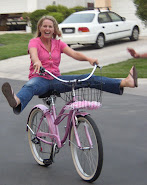



















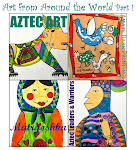
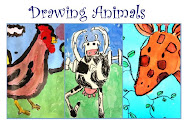
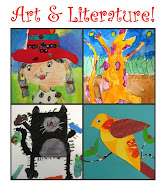


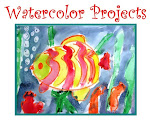





10 comments:
LOVE IT! Your lessons are always the best!
This is so perfect for my class on Tuesday. Your timing is impeccable. Thank you so much for sharing this great fun way to learn color theory!
Cute idea! I'll bet the kids loved it.
Such a cute lesson. I love it.
Just gorgeous- You might like to check out the Linda Kranz book - Only One You- and see her cute fish made in clay and paper- I have made both. Using the values as inspiration kids.
Thanks again, Cheryl, for another great recommendation!
Love it! I am sure the kids loved it and we as teachers secretly love it that they are learning the important color theory! When kids are having fun they truly remember the concept. :)
This year my goal is to do whatever art project you tell me to do!!! LOL! My class is full of 1st graders but I don't see any reason why we can't do this activity as well! I'll be giving it a try! Until you tell me what to do next... thanks! : )
I LOVED this art lesson and I was very, very happy to stumble upon your website! WHAT great, great stuff--for every level! You are a dream come true for this mom who acts as "art docent" for her sons two different classes!
Nice idea! Love it
Post a Comment